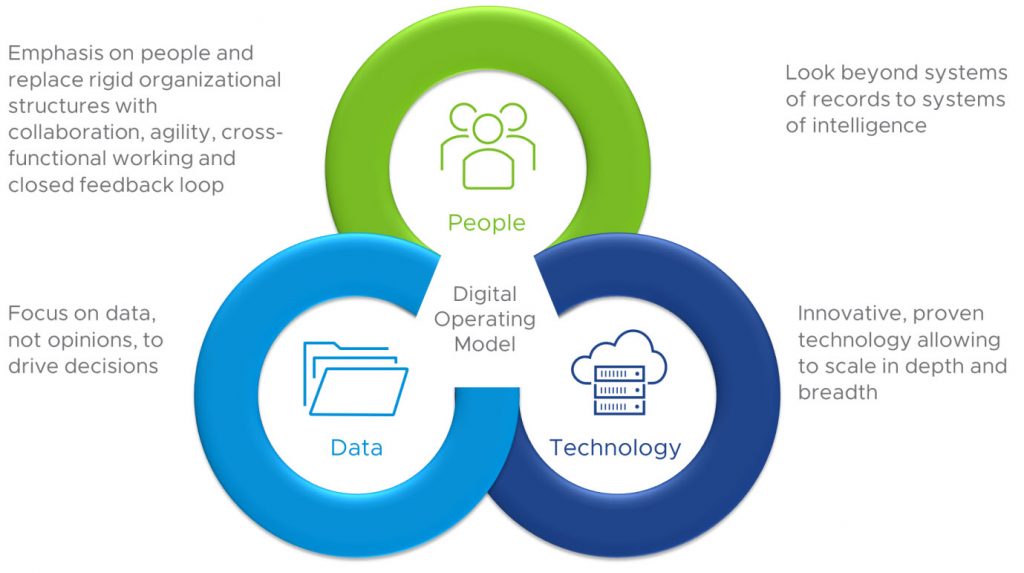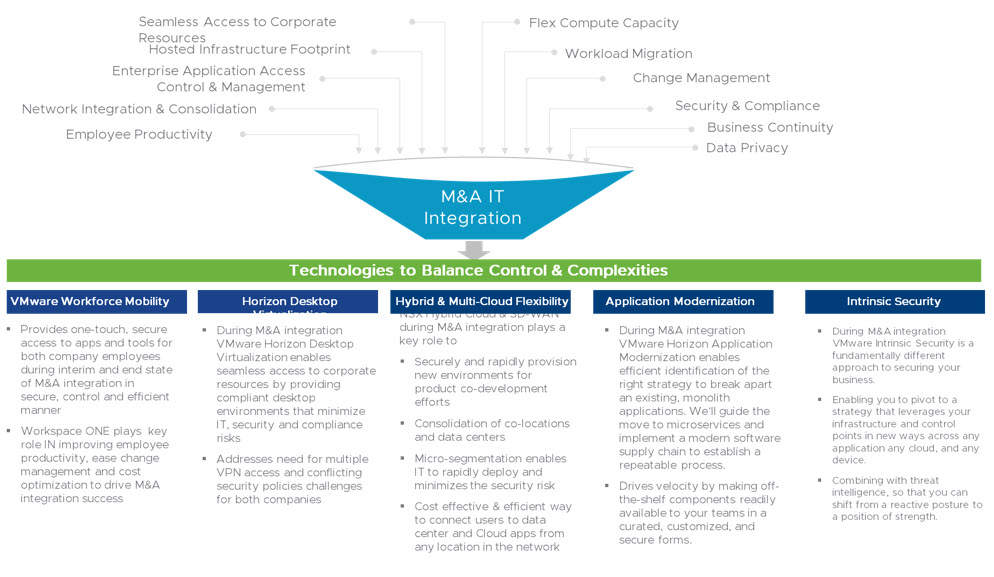by: VMware Senior Director, IT Mergers and Acquisitions Integration and Services Romy Kaura
Competition in the marketplace to acquire new businesses, improve market share and expand operations is at an all-time high, driving up valuations and changing the ways enterprises approach and execute deals.
An example of this is that global merger and acquisition (M&A) activity matched a record in 2021; publicly disclosed deal values reached all-time highs of US$5.1 T, smashing the previous record of US$4.2 T set in 2007, according to PwC, a multinational accounting firm. Moreover, economic indicators show that the pace isn’t going to slow anytime soon.
M&A activity is affected by a labor shortage; acquiring talent is becoming a more important aspect of acquisitions. As a result, it’s more important than ever for organizations to pursue “extraordinary” synergies. This includes achieving seamless post-merger integrations by:
- Understanding the hows and whys of what’s being done
- Empowering employees
- Engaging customers
- Innovative products
- Optimizing business operations
- Finding new ways to grow revenue
The journey from merger announcement to complete integration is complex, with many unknowns. Traditional operating models don’t work because of limited agility and scalability and are generally slow and costly.
We live in a digital world where everything is data, and to compete, we must transform M&A activity into a digital operating model. See Figure 1.

The digital operating model allows us to:
- Focus on data, not opinions, to drive decisions
- Emphasize people and replace rigid organizational structures with collaboration, agility, cross-functional working and closed feedback loop
- Look beyond systems of records to systems of intelligence
- Apply innovative, robust technology
VMware has acquired and successfully integrated more than 25 companies in the past few years. VMware IT achieves this through proven technologies that can adapt to any scenario, allowing us to scale in depth—automation, differentiation, building better products and superior customer experiences—and breadth—market reach, ecosystems and increased market share.

What is the right technology?
To navigate the integration complexities of our mergers and acquisitions, we leverage our products: VMware Workspace ONE®, VMware Horizon® desktop virtualization, VMware SD-WAN®, VMware NSX® hybrid cloud and VMware Tanzu™.
Workspace ONE Mobility provides secure access to apps and tools to deliver an engaging employee experience. It promotes productivity, optimizes cost and promotes effective change management. These capabilities are backed by enterprise-grade security and policy-driven application management, including central monitoring.
VMware Horizon® desktop virtualization enables seamless Day One access and beyond. Colleagues access the network and applications by virtual out-of-the-box desktop environments that minimize security and compliance risks.
VMware SD-WAN® and VMware NSX® hybrid and multi-cloud play a pivotal role in securely and rapidly provisioning new environments for product co-development efforts. In addition, they enable IT to deploy quickly and minimize security risks and costs as users connect to the data centers and cloud apps from any location in the network. VMware NSX provides a fundamentally different approach to securing our business. It enables us to pivot to a strategy that leverages our infrastructure and control points in new ways across any application, cloud and device. In conjunction with threat intelligence, this promotes a shift from a reactive posture to a position of strength.
During M&A integration, VMware Tanzu efficiently identifies the right strategy to break apart existing monolithic applications. It facilitates a move to microservices and implements a modern software supply chain to establish a repeatable process. In addition, it drives velocity by making off-the-shelf components readily available to teams in curated, customized and secure forms.
Planning for the post-merger integration early in the process lays the groundwork for a successful operational consolidation. A digital operating model is instrumental to post-merger integration success. It meets the challenge of realizing synergies quickly, cost-effectively, and securely by unlocking the value of people, data and technology.
VMware on VMware blogs are written by IT subject matter experts sharing stories about our digital transformation using VMware products and services in a global production environment. Contact your sales rep or vmwonvmw@vmware.com to schedule a briefing on this topic. Visit the VMware on VMware microsite and follow us on Twitter.



